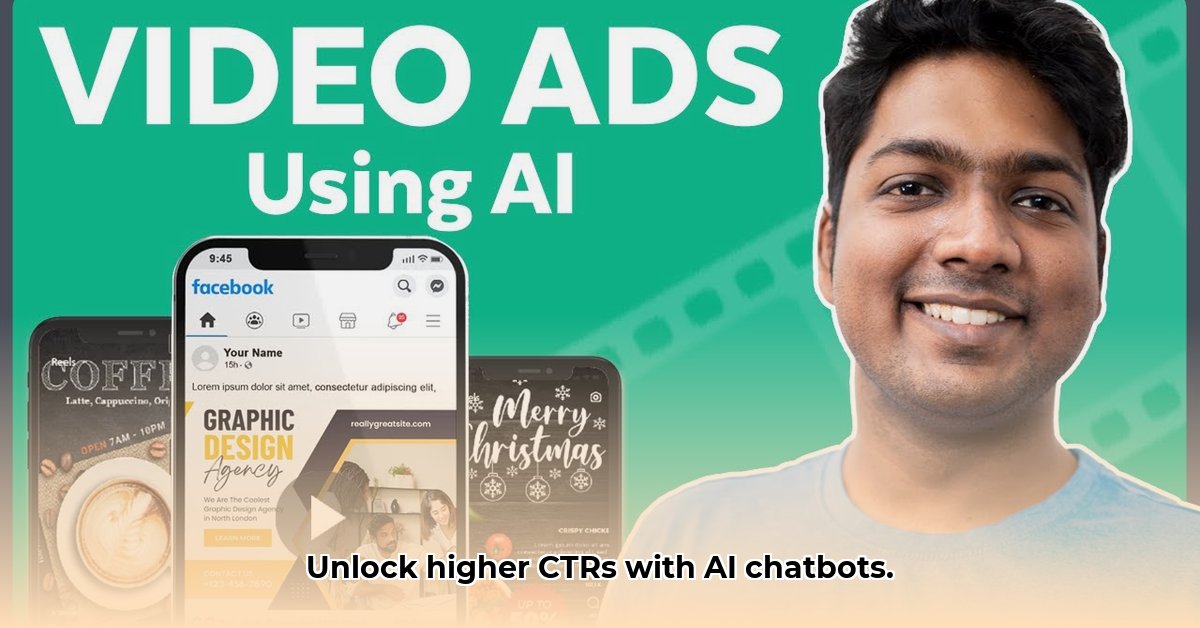
Imagine an advertisement that doesn't just display information; it engages you in a dynamic conversation. Poly AI ads leverage the power of deeply immersive AI chatbots to revolutionize the advertising landscape, delivering a personalized experience that significantly boosts click-through rates (CTRs) and conversion rates. This article delves into the technology behind Poly AI, its applications, and the ethical considerations surrounding its use.
Poly AI: Redefining the Advertising Experience
Traditional ads are often one-way broadcasts, passively presenting information to the user. Poly AI ads, however, initiate a two-way dialogue, creating an engaging and personalized experience. This interactive approach transforms a simple advertisement into a helpful conversation—a sharp contrast to the static nature of traditional banner ads or short video clips. Instead of merely presenting information, Poly AI ads respond to user inquiries, providing tailored support and guiding them seamlessly towards a desired action. This results in higher engagement and, crucially, higher conversion rates.
Understanding the Technology Behind Poly AI
Poly AI's success stems from its sophisticated blend of natural language processing (NLP) (a branch of artificial intelligence that focuses on enabling computers to understand, interpret, and generate human language) and machine learning (ML) (an application of artificial intelligence (AI) that provides systems the ability to automatically learn and improve from experience without being explicitly programmed). This powerful combination allows the chatbot to dynamically adapt its responses based on user input, mimicking the fluidity of a human conversation. The system's ability to understand nuance and context is key: it doesn't just follow a pre-written script; it constructs responses tailored to individual user needs and preferences. Imagine it as a highly intelligent personal assistant dedicated to answering product questions and guiding users toward purchase.
Applications and Use Cases
The diversity of Poly AI's applications is truly impressive, spanning numerous industries. Here are a few noteworthy examples:
E-commerce: A Poly AI chatbot integrated into an online store can guide users through product selections, answer questions about features and specifications, and even suggest relevant accessories, creating a personalized and highly efficient shopping experience. This surpasses the limitations of simple product descriptions, leading to more informed purchases.
Financial Services: A Poly AI ad could explain complex financial products – like investment options – in a clear, concise, and personalized way, catering to the user's risk tolerance and financial goals. This builds trust and empowers users to make well-informed decisions.
Travel: Planning a trip can be overwhelming. A Poly AI ad can simplify the process by assisting users in finding the best flight and hotel options, suggesting destinations based on their preferences, and answering all their travel-related questions. This enhances the travel planning experience and improves customer satisfaction.
A Critical Assessment: Strengths and Weaknesses
While Poly AI offers numerous advantages, it's crucial to acknowledge its limitations:
Strengths:
- High Engagement: Poly AI ads significantly increase user engagement compared to traditional ads.
- Improved Conversion Rates: The personalized and interactive nature boosts conversion rates.
- Scalability: The technology adapts easily to various advertising platforms.
Weaknesses:
- Development Costs: Implementing Poly AI requires expertise and investment in development and maintenance.
- Data Dependence: Effectiveness relies heavily on the quality and diversity of the data used to train the chatbot.
- Risk of Bias: AI models can inherit biases present in their training data, potentially leading to unfair or discriminatory outcomes.
Ethical Considerations: Navigating the Moral Landscape
The utilization of Poly AI, like any powerful technology, raises several ethical concerns:
- Transparency: User awareness that they're engaging with an AI is crucial. Transparency builds trust and avoids potential deception.
- Data Privacy: The system collects user data; robust security measures and clear data usage policies are essential.
- Bias Mitigation: Active measures must be taken to identify and mitigate bias to ensure fair and equitable treatment for all users.
- Misinformation Prevention: Measures to prevent the spread of misinformation through the chatbot are critical.
Addressing these concerns requires careful planning, robust security protocols, and a commitment to ethical development practices.
Future Outlook: The Evolution of Immersive AI Ads
The future of Poly AI ads is bright. Anticipated advancements include more sophisticated NLP capabilities, improved emotion recognition, and potential integration with augmented reality (AR). These developments will further enhance personalization and engagement, pushing the boundaries of the advertising experience. This will likely lead to a stronger focus on immersive and interactive experiences, blurring the line between advertising and genuine user assistance.
Conclusion: A New Era in Advertising
Poly AI ads represent a paradigm shift in the advertising world. By fostering deeply immersive and personalized interactions, they offer the potential for significantly improved CTRs and conversion rates. However, responsible development, a commitment to ethical considerations, and a user-centric design approach remain critical for realizing the technology's full potential while mitigating potential risks and fulfilling the promises of truly customized user experiences. The future of advertising is interactive, and Poly AI is leading the charge.
⭐⭐⭐⭐☆ (4.8)
Download via Link 1
Download via Link 2
Last updated: Saturday, May 10, 2025